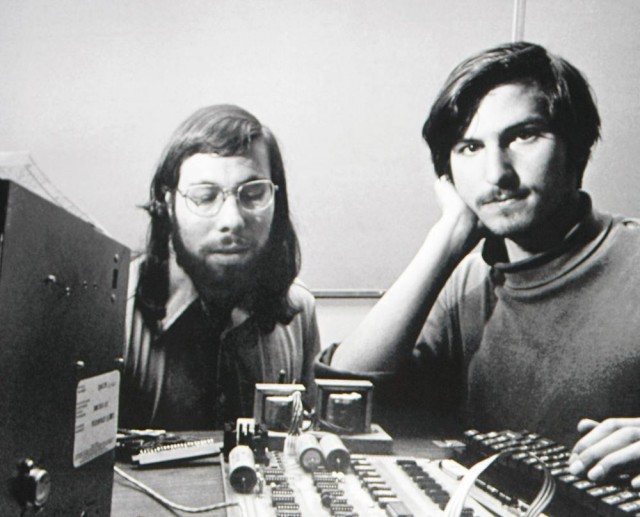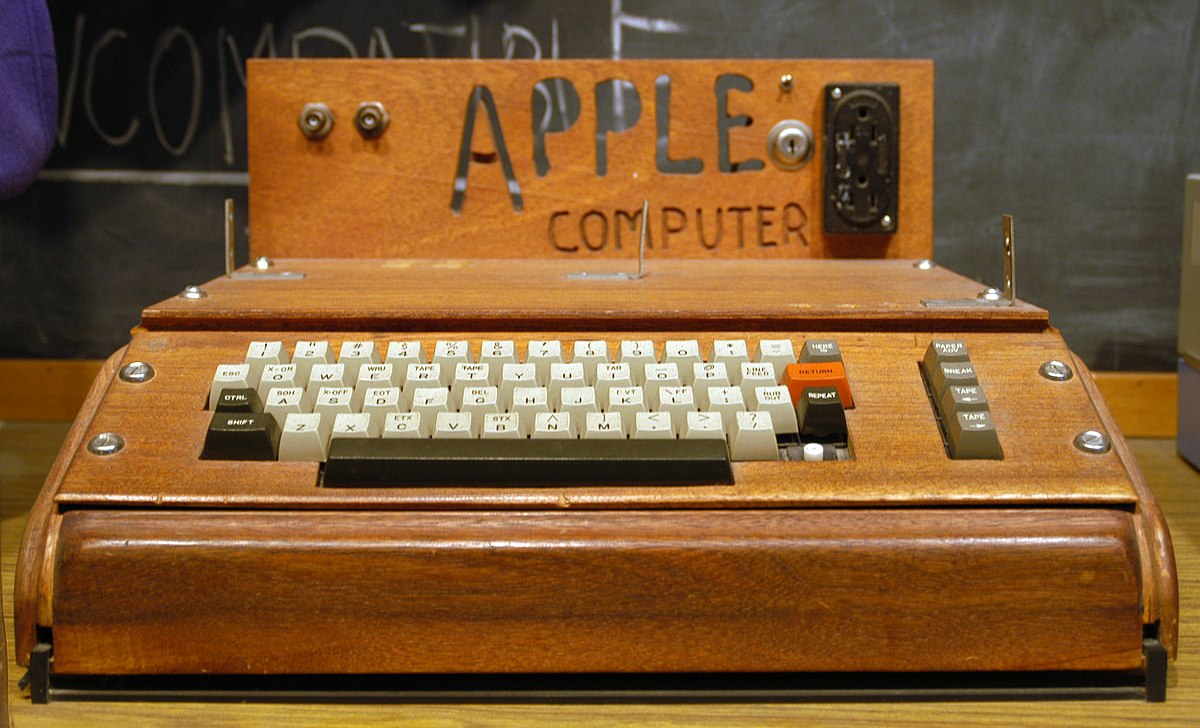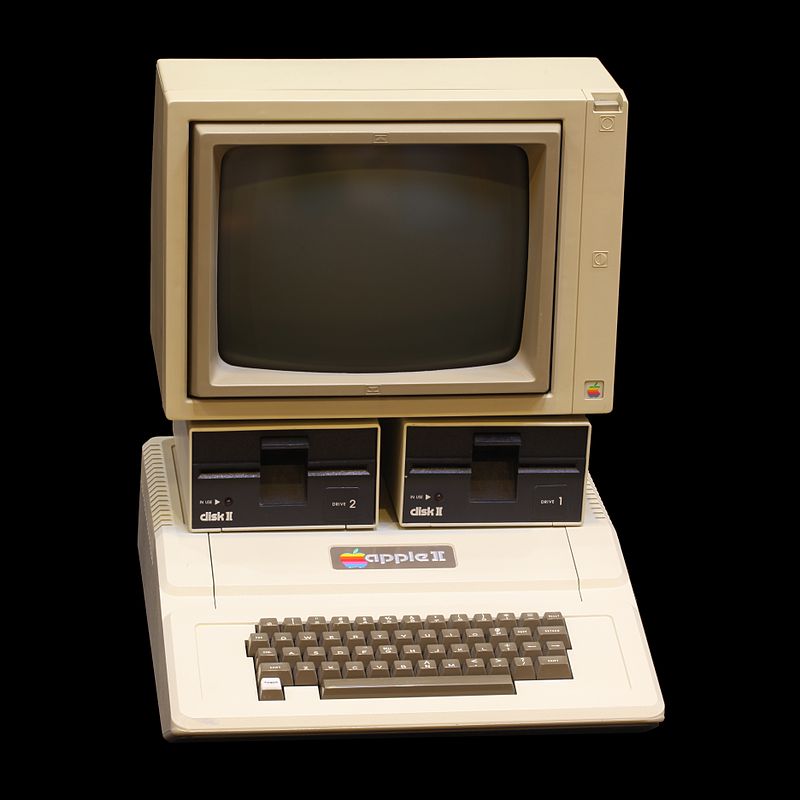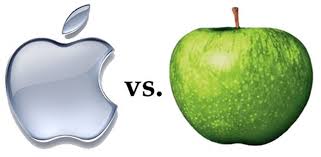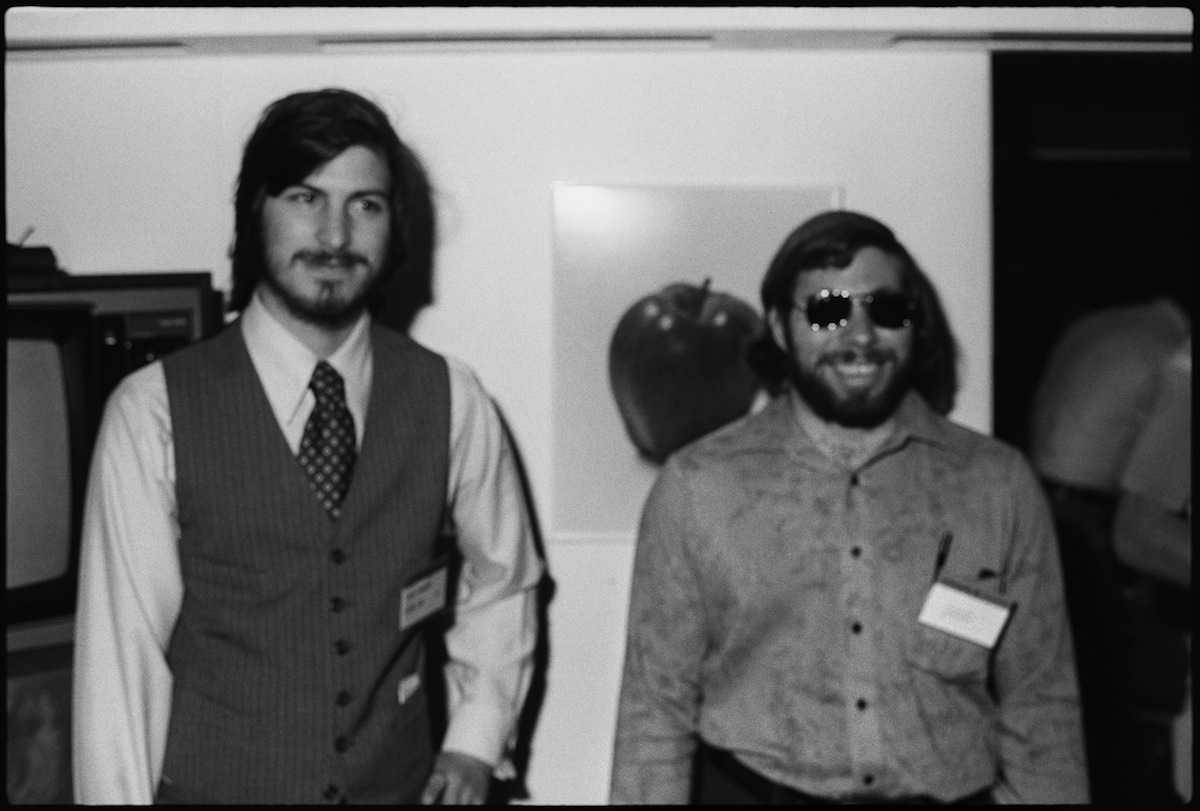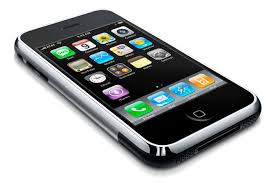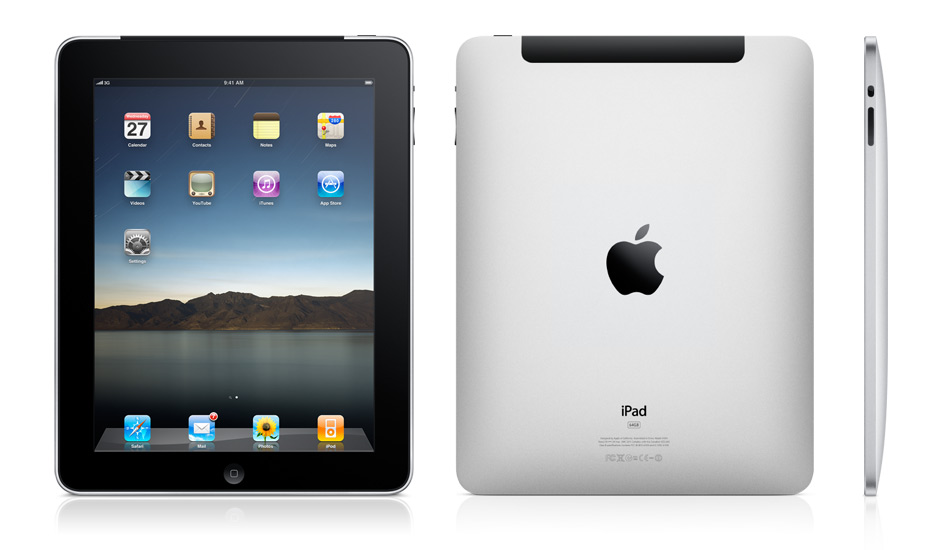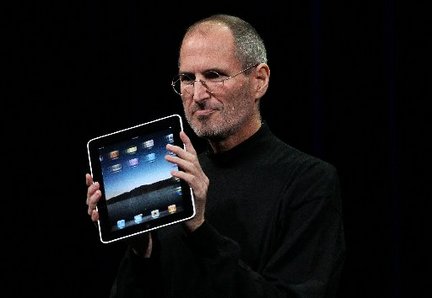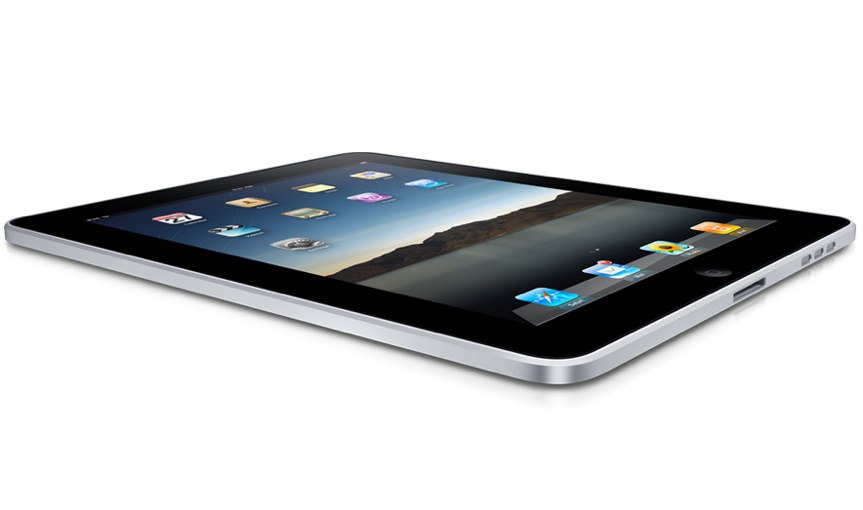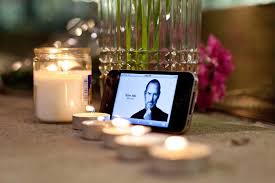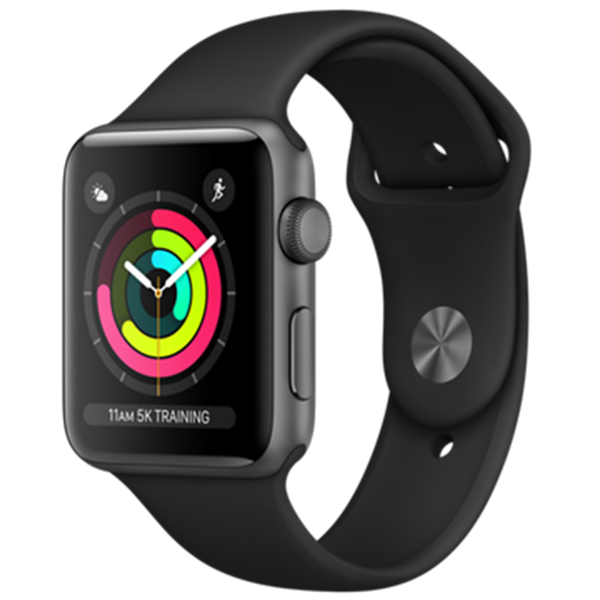April Fool's Day is also the anniversary of the founding of Apple. This year, it celebrates forty-two years of existence, full of a number of important moments. Let's recall some of them in the annual review.
Zrozeni
Almost everyone knows that today's iconic Apple company was born in the garage of Steve Jobs' adoptive parents, but we still like to remember it. But the friendship between Steve Jobs and Wozniak is older than the apple company. "We first met when I was in college," one of the founders, Steve Wozniak, recalled in 2007. “It was 1971 when one of my friends told me that I should meet Steve Jobs because he likes electronics and pranks. And so he introduced us.'
The arrival of the Apple I
Jobs and Wozniak soon began working intensively on the first official Apple computer. The Apple I sold for $666,66 (which had nothing to do with the religious beliefs of any of Apple's founders), and today fetches hundreds of thousands of dollars on auction sites.
Apple II - even better, even more personal
A year after the first attempt with the Apple I came a new model called the Apple II. In its quest to bring users a truly personal computer in the truest sense of the word, the apple company was a little more successful this time, and the Apple II found its way into many homes and offices.
Apple against apple
Apple also went down in history with an interesting lawsuit with ... Apple. Apple Corps., the recording company founded by members of the legendary Beatles, has been around a little longer than the "computer" Apple, and when the Cupertino company wanted to venture into the waters of the multimedia business, the second Apple did not like it too much - but the dispute subsided years later .
Shares, shares, shares
Apple went public on December 12, 1980. Can you guess what its share price was then? It was a whopping $22.
Goodbye, Steve
In 1981, Apple co-founder Steve Wozniak survived a plane crash from which he escaped with relatively serious injuries. This first forced him to take a temporary health break, from which he returned, but in 1985 he left the apple company forever.
John Sculley knows his way around the helm
John Sculley defected to Apple from PepsiCo. When he started with her in 1983, she was worth $800 million. By the time of his departure ten years later, the value of the apple company had risen to $8 billion. Sculley was attracted to Apple by none other than Steve Jobs, who then asked him a suggestive question whether he wanted to sell fresh water until he died, or rather change the world.
Hello, Mac!
Square, white, compact, easy to use, revolutionary - and with a graphical user interface. Such was the first Apple Macintosh. For users it meant the end of communication through commands, for Apple it brought computers even closer to users. A clear win-win situation.
1984
XVIII Super Bowl. The upcoming Macintosh. And the Orwellian advertising spot "1984", which at the time took the breath away of both the lay and professional public, and to this day it rightfully deserves a place in the textbooks of advertising and marketing creation.
Goodbye, Steve
Although Steve Jobs was responsible for John Sculley's arrival at Apple, the two personalities did not get along very well together. The situation culminated in 1985 with the departure of Steve Jobs, who then founded his own company NeXT.
The Microsoft lawsuit
During its existence, Apple has experienced more or less absurd lawsuits from various parties, but this time it was a lawsuit against Microsoft itself on the part of the apple company. In it, Apple claimed that the newly released Windows operating system was suspiciously similar to the graphical interface on the Macintosh.
The Powerbook is coming
For Apple, it was only a step from a personal computer to a laptop. It came in the form of a Powerbook, a surprisingly powerful and above all portable computer by the standards of its time. The product line was later replaced by MacBooks.
https://www.youtube.com/watch?v=U1hyA07V5lQ
Newton in the palm of your hand
Long, long before users' hands could occupy an iPhone, Apple released a stylus-controlled PDA called the Newton MessagePad. Only with a stylus. A stylus that Steve Jobs later said no one needed.
When Apple buys something…
After the departure of Steve Jobs, the apple company did not do very well. For some time it stubbornly tried to function without its charismatic co-founder, but in the second half of the nineties it enthusiastically welcomed him back into its ranks - along with his own company NeXT.
iMac in color
Apple gradually became a master at producing computers that everyone wanted on their desks. At the end of the nineties, it released a product line of new all-in-one iMacs in attractive colors. A color computer with a bitten apple thus became a luxurious fashion accessory at the same time.
Jobs back in charge
Despite certain idiosyncratic expressions, Steve Jobs was always highly valued in his leadership position. He officially took over at Apple again in 2000. After years, Apple was coming back to prominence.
The first Apple Stores
In 2001, Apple revealed its grandiose plans to open as many as twenty-five retail brand stores. Apple Stores, with their elaborate concept, soon became almost shrines for all fanatical fans of the bitten apple.
Thousands of songs in your pocket
MP3 players were not revolutionary in their time. But then came the iPod. He wasn't the first pocket player, but he soon became a legend. A unique design, better and better functions with each model and a sophisticated advertising campaign did their job.
Launch iTunes
At the time, probably few people would have believed that the era of luring young ladies to a collection of CDs would end one day. iTunes started the trend of buying multimedia content in digital form - and also the laborious conversion of content from physical media to virtual form.
Steve Jobs disease
In 2003, Steve Jobs received an inexorable diagnosis - pancreatic cancer. He delayed its official announcement for a long time, as well as the initiation of traditional treatment and a forced medical break. He fought with his own stubbornness until the last moment.
A speech that went down in history
The year 2005 and Steve Jobs' legendary speech on the grounds of Stanford University. Is there anything else that needs to be added? The most quoted, inspiring, iconic - this was the speech of the co-founder of Apple. Stay hungry, stay foolish.
A bit different work with shares
With a few exceptions, buying Apple shares has practically always been profitable. However, some dates were more favorable after all, which Apple took advantage of not very honestly and backdated the dates of the allocation of shares to some executives. Steve Jobs apologized for the scandal.
The iPhone is coming
Year 2007. A key year not only for Apple, but also for its customers, for the mobile phone market and for a number of other areas. The iPhone changed the way people use their phones, the way they work and the way they play.
Towards third parties
About a year after the very first iPhone saw the light of day, Apple launched an online store where users could also download third-party applications. Two months after its launch, the App Store recorded an incredible 100 million downloads.
Hope in treatment
When the information about the serious illness of Steve Jobs became public, many people were disturbed. Jobs refused traditional treatment for a long time, but finally decided to undergo a liver transplant in Tennessee.
The iPad is coming
Tablets were around before the iPad. But no tablet is like an iPad. In 2010, an unexpected revolution came along with the iPad, which resulted in record sales of apple tablets and another important entry in the history of the apple company.
Working conditions at Foxconn
As such, Apple has a very positive impact and its office buildings look like a place that employees might not even want to go home from. But Apple's supply chains are far worse. When a series of employee suicides occurred at China's Foxconn, it cast a bad light on Apple as such.
A break for Steve
Steve Jobs has been loyal to Apple for the vast majority of its existence and has not left it - with two exceptions. The first was related to the arrival of John Sculley, the second was caused by Jobs's poor health. "I really love Apple and hope to be back as soon as possible," Jobs said in a 2011 statement to employees.
Changing of the Guard
Instead of returning, however, health problems forced Steve Jobs to let go of the helm of the apple company. Jobs named Tim Cook as his successor. "I've always said that if there ever happens to be a day when I can no longer handle my responsibilities to Apple, I'll be the first to tell you," Jobs wrote in a message to employees. "Unfortunately, that day has come."
Goodbye and thanks for all the apples
On October 5, 2011, Steve Jobs died at the age of 56.
Up to the forehead
The top of the list of the most valuable companies in the world was controlled by the giant Exxon - but only until 2011, when Apple replaced it sovereignly and did not intend to leave the top positions even in the following years.
Taxes, taxes, taxes
The apple company has faced a number of accusations over the course of its existence - including accusations that it cleverly avoids paying taxes. In this direction, Apple had to defend Tim Cook personally in the Washington Congress. "We pay all the taxes we have to, every dollar," Cook said.
Apple buys Beats
In May 2014, Apple bought Beats Electronics for more than $3 billion, which has, among other things, the popular Beats headphones. But it didn't stop at headphones, and we can see the influence of Beats on the Apple Music platform, for example.
U2 album free
At the end of the conference in autumn 2014, when Apple introduced the iPhone 6 and iPhone 6 Plus to the world, the Irish band U2 also performed. After the performance, the band announced along with Tim Cook that their new album would be free for everyone. In addition to the excitement, the announcement also resulted in an epidemic of questions regarding instructions on how to hide an album in iTunes.
C
In October 2014, Apple CEO Tim Cook officially announced his homosexual orientation to the world. He became the highest-ranking executive to make a public coming-out.
The Apple Watch is coming
In 2015, Apple joined companies such as Samsung, Pebble or even Fitbit and came out with its own smart watch called the Apple Watch. Despite the initial embarrassment, the smart apple watch eventually won the favor of users.
Apple vs. US Govt
Among other things, 2016 was marked by the shooting in San Bernardino - because Apple refused to listen to the FBI and unlock the iPhone of one of the attackers. The FBI eventually broke into the phone without Apple's help.
Goodbye, Jack
The release of the iPhone 7 and iPhone 7 Plus is also a significant milestone in Apple's history. The "sevens" got rid of the old headphone jack, which was an insurmountable, unsolvable and incomprehensible problem for part of the public. Another part of the public has overcome this problem by reducing or buying AirPods.
Revolutionary X
Ten years after the launch of the very first iPhone, Apple came up with the eagerly awaited anniversary model. iPhone X got rid of the iconic home button and came with a number of completely new features, such as Face ID.
